We process personal information and data on users of our website, through the use of cookies and other technologies, to deliver our services, personalize advertising, and to analyze website activity. We may share certain information on our users with our advertising and analytics partners. For additional details, please refer to our Privacy Policy.
By clicking “AGREE” below, you agree to our Terms of Use and Privacy Policy , as well as our personal data processing and cookie practices as described therein. You also consent to the transfer of your data to our servers in the United States, where data protection laws may be different from those in your country.
Important Terms
A biopolymer composed of two polynucleotide chains that coil around each other to form a double helix carrying genetic instructions for the development, functioning, growth and reproduction of all known organisms. The information in DNA is stored as a code made up of four chemical bases: adenine (A), cytosine (C), guanine (G) and thymine (T). Within eukaryotic cells, DNA is organized into long structures called chromosomes. Before typical cell division, these chromosomes are duplicated in the process of DNA replication, providing a complete set of chromosomes for each daughter cell.
A basic unit of heredity and a sequence of nucleotides in DNA that encodes the synthesis of a gene product, either RNA or protein.
A group of animals carrying the same set of genetic features (mutations and/or transgenes)
A phenotype, genotype, or gene allele (variant) that predominates in a natural population of organisms or in lines/strains of organisms in contrast to that of natural or laboratory mutant forms.
A set of features (mutations) of all other genes that can potentially affect the phenotypic expression of the gene (or genes) under study.
The deliberate breeding of two different individuals that results in offspring that carry part of the genetic material of each parent.
A set of allelic variants of the genes of an individual organism.
A process of determining differences in the genetic make-up (genotype) of an individual by examining the individual's DNA sequence using biological assays and comparing it to another individual's sequence or a reference sequence.
Transposable elements found in Drosophila; commonly used as mutagenic agents in genetic experiments. They may contain various transgenes within themselves.
The process of determining the order of nucleotides in the stretch of DNA or RNA.
A genetic mutation where a single nucleotide base is changed, inserted or deleted from a DNA sequence.
A change in the DNA sequence of an organism. Mutations can result from errors in DNA replication during cell division, exposure to mutagens or a viral infection. Germline mutations (that occur in eggs and sperm) can be passed on to offspring, while somatic mutations (that occur in body cells) are not passed on.
Polymerase chain reaction; a method widely used to rapidly make millions to billions of copies (complete or partial) of a specific DNA sample, allowing scientists to take a very small sample of DNA and amplify it (or a part of it) to a large enough amount to study in detail.
Threadlike structures made of protein and single molecules of DNA that carry hereditary information.
A transgene that determines the temporal and/or spatial pattern of expression (activity) of another transgene.
A gene that is taken from the genome of one organism (or a combination of different genes taken from genomes of different organisms) and introduced into the genome of another organism by artificial techniques.
A protein that enhance the rate of transcription of genetic information from DNA to messenger RNA, by binding to a specific DNA sequence.
The deliberate modification of the characteristics of an organism by manipulating its genetic material.
A version of the naturally occurring two-piece guide RNA complex engineered into a single, continuous sequence. The sgRNA is used to direct the Cas9-transcriptional activator protein to bind a particular DNA sequence to control target gene expression.
A biopolymer molecule with essential various roles in coding, decoding, regulation and expression of genes. The information in RNA is stored as a code made up of four chemical bases: adenine (A), cytosine (C), guanine (G) and uracil (U).
DNA (deoxyribonucleic acid)
Gene
Line/Strain
Wild type
Genetic background
Genetic crossing
Genotype
Genotyping
P-elements
Sequencing
Point mutation
Mutation
PCR
Chromosomes
Driver
Transgene
Transcription activator
Genetic engineering
Single-guide RNA (sgRNA)
RNA (ribonucleic acid)
Drosophila melanogaster

Lifespan ~ 3 months
4 pairs of chromosomes
17,728 genes
13,907 protein-coding genes

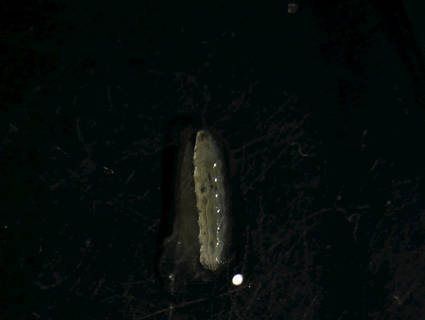
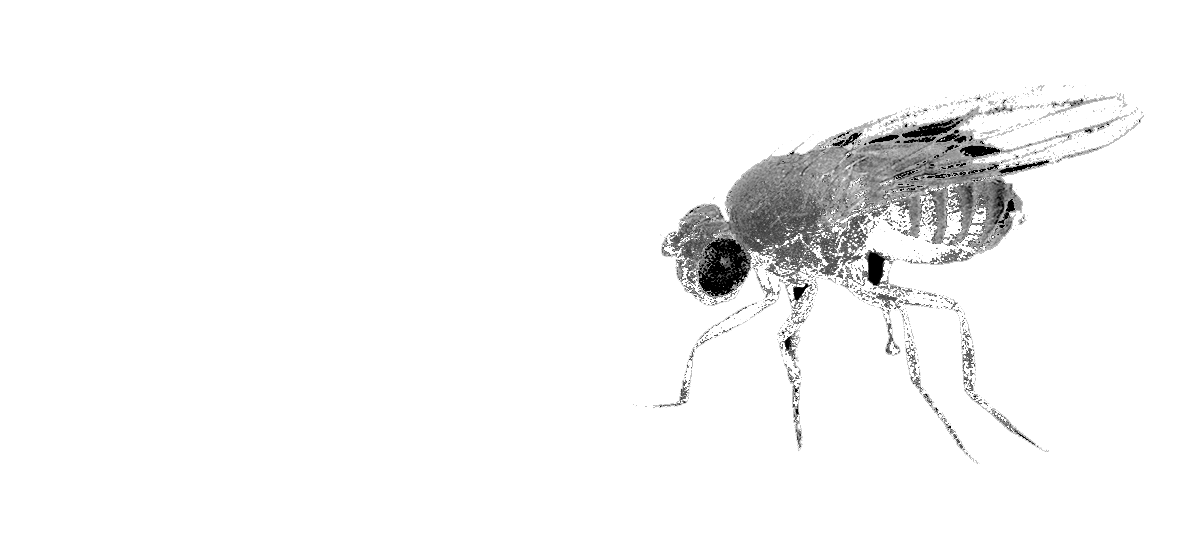
Drosophila life cycle



Embryo
1 day
2 days
1st age
2nd age
3rd age
2.5-3
days
days
3.5-4.5
days
days
Larva
Pupa
Adult fly
Working with fly lines carrying mutations in genes that have been shown to impact on longevity in previous studies. Obtaining combinations of mutations by crossing flies lines. Testing possible combinations of gene mutations and verification of synergistic effects on fly longevity.
Stage 1.

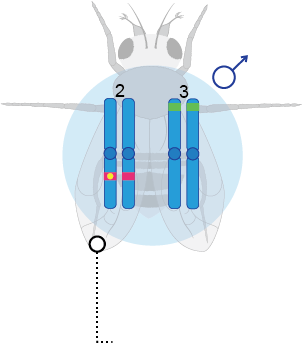
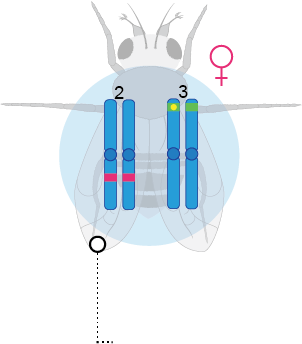
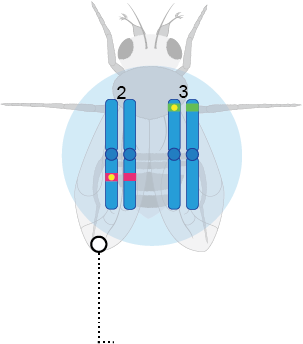


Mutation in gene A, located on the right arm of the 2nd chromosome
Mutation in gene B located on the left arm of the 2nd chromosome
The resulting combination of mutations in genes A and B
Hybridization

Work with lines belonging to the dCas9-VPR system for targeted gene overexpression. Investigation of combined effects of dCas9-VPR overexpression of target genes on fly longevity.
Stage 2.
Below is a dCas9-VPR system for targeted gene overexpression

Creation and testing of transgenic fly lines encoding sgRNA for dCas9-VPR-induced overexpression
of selected candidate genes.
of selected candidate genes.
Stage 3.
Below is a plan for targeted gene overexpression by dCas9-VPR system.

Stage 4.
Combination of mutations (from step 1) with overexpression of a gene (steps 2-3), overexpression of one gene with overexpression of another gene (step 2-3), etc.

